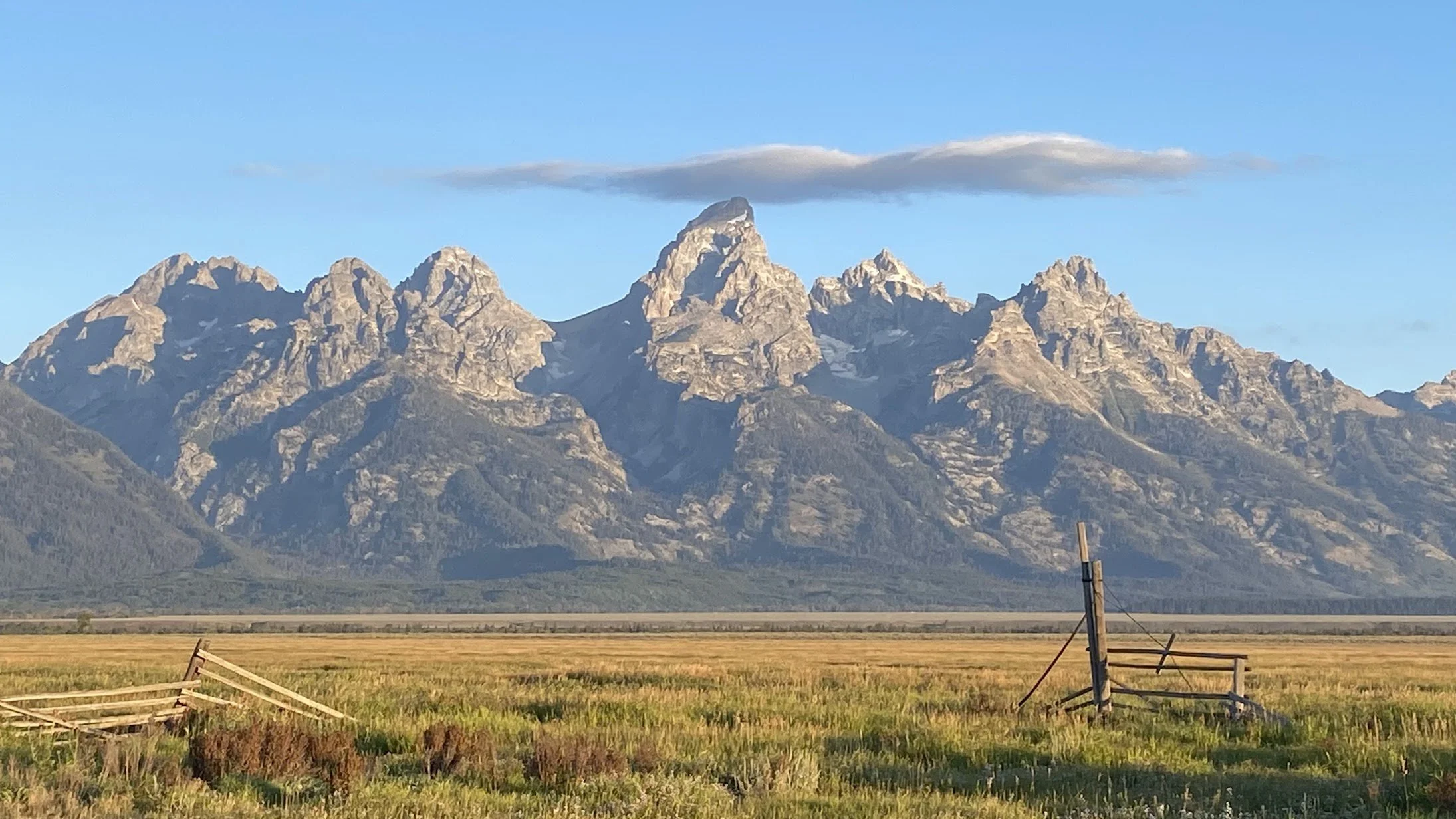Climbing Disappointment Peak (Bot9 #365)
For our 20th anniversary, I surprised my wife with a vacation to one of our favorite locations - Jackson, Wyoming and the Grand Tetons. One the things we enjoying doing most on our trips is to hike and take photos (iPhones sure have made that a lot easier!). The first photo here is taken from a place called Mormon Row at dawn on our last morning there. The cloud ended up being a string of afternoon storms and provided the shot with that little extra character. The peak in the middle is Grand Teton and is 13,775 feet high. Like any of the highest peaks in a mountain range, it’s the one that draws the most summit attempts. After all, what is the purpose of a mountain other than to climb it!
From the first perspective, it appears that there is a path to the top. It certainly doesn’t look easy and does appear somewhat treacherous, but it doesn’t seem impossible. But the crazy thing about the Tetons is that they’re all a matter of perspective. Drive 10, 15 or 20 miles to the north or south, and they show very differently. The second photo is taken from a turnout closer and to the north of the original location. The summit of Grand Teton is to the right in the clouds. The sharp rock in the middle is Teepe Pillar. The peak on the left has an important name and story - Disappointment Peak.
Disappointment Peak was given its name in 1925 when four Colorado climbers attempted the first ascent of Grand only to encounter this spot where a 450-foot drop stood before them. You can’t see it from the first photo, which was the direction from which these climbers started to climb. They reached the top of a peak, but it wasn’t the one they wanted. The peak’s name now forever bears the emotion they felt in the moment - disappointment.
Think about that - they climbed a peak almost 12,000-feet in the air, but it served as a disappointment. Doesn’t that feel like many of our seasons when we don’t quite achieve the ultimate goal of a championship? Over time we gain perspective and recognize all of the good from a season where we didn’t accomplish what we desired, but, in the moment, it feels like a disappointment. Like something was missing. Like we came up short.
Dealing with failure or disappointment can be heartbreaking, especially when we have invested so much time and emotion into a vision. Even David experienced disappointment in the Old Testament. He had his heart set on building a temple for God, but God told him that his son, Solomon, would be the one to build the temple (1 Chronicles 28:2-6). Imagine that for a moment? You have this vision for building something for the God you honor and love, but He doesn’t allow it (for good reason, mind you). David’s reaction is not despair, but rather praises God and passes his plans on to Solomon (1 Chronicles 28:11-13). This kind of graceful response to disappointment displays hope in God who loves us and in whatever it is He is calling us to do next, even when we had something different in mind.
As we start our seasons, the likelihood of our teams playing every game perfectly and going undefeated is zero. We will experience failure and disappointment. Some of you may have experienced this on a number of levels already, whether it has been losses on the field, efforts of the athletes being less than desirable, attitude issues, or something weighing down the spirit of the team. No matter the circumstance, let us lean into what Napoleon Bonaparte once said, “A leader is a dealer in hope.” The importance of this cannot be understated.
(Please note - the story about the rat experiment in the video is somewhat disturbing so be forewarned)
The story of the rats in the video is a powerful illustration of hope. The virtue of hope is one we must lean into throughout our seasons at every turn of disappointment. Athletes will follow leaders who are constantly inspiring new expectations and deeper beliefs within. When we deal in hope, we don’t stop and we discover new capacities to reach higher levels. Constantly selling hope and providing pathways to achieve our goals, even in the darkest moments, goes a long way in embedding hope as a lifelong virtue in all of our young athletes.
We must remember that hope and perseverance in the face of disappointment doesn’t come naturally to most people, it requires an intentional mindset with the virtue of hope as a source. As the line goes from Stephen King’s The Shawshank Redemption, "Remember that hope is a good thing, Red, maybe the best of things, and no good thing ever dies."


